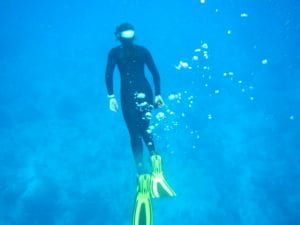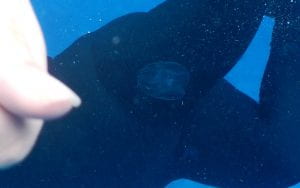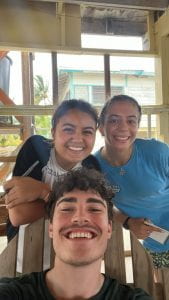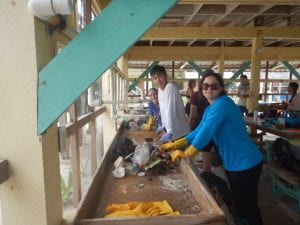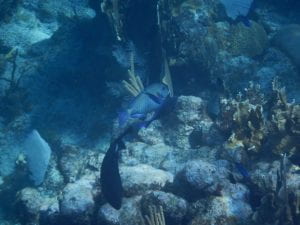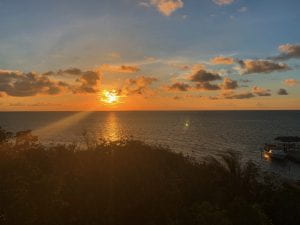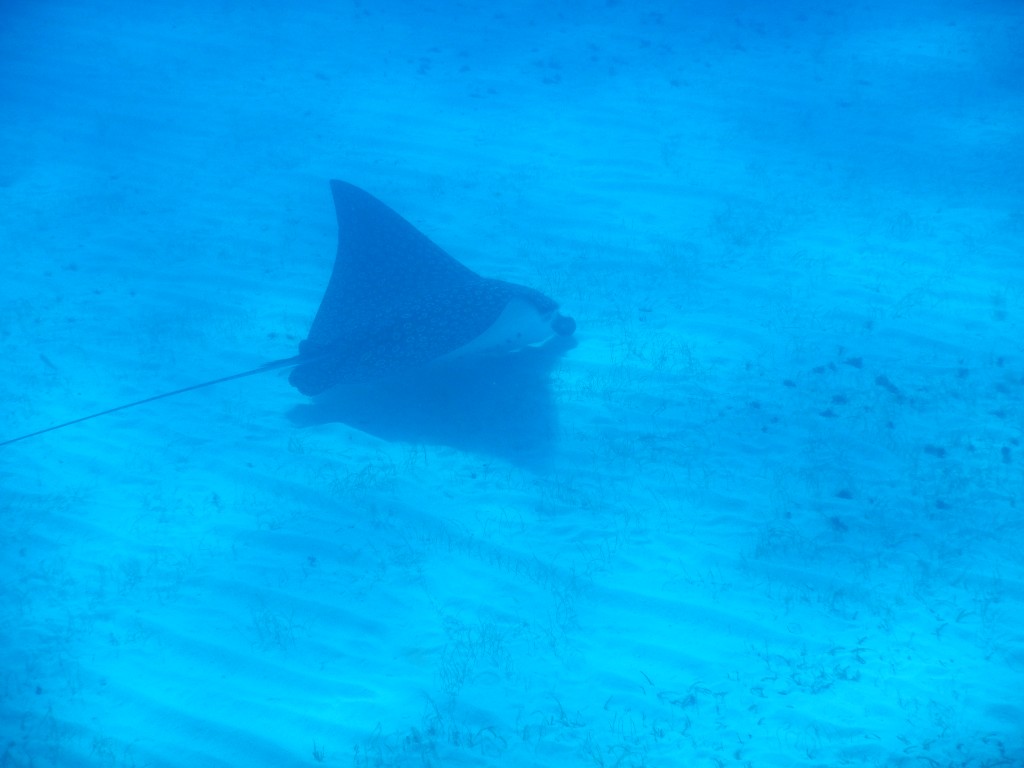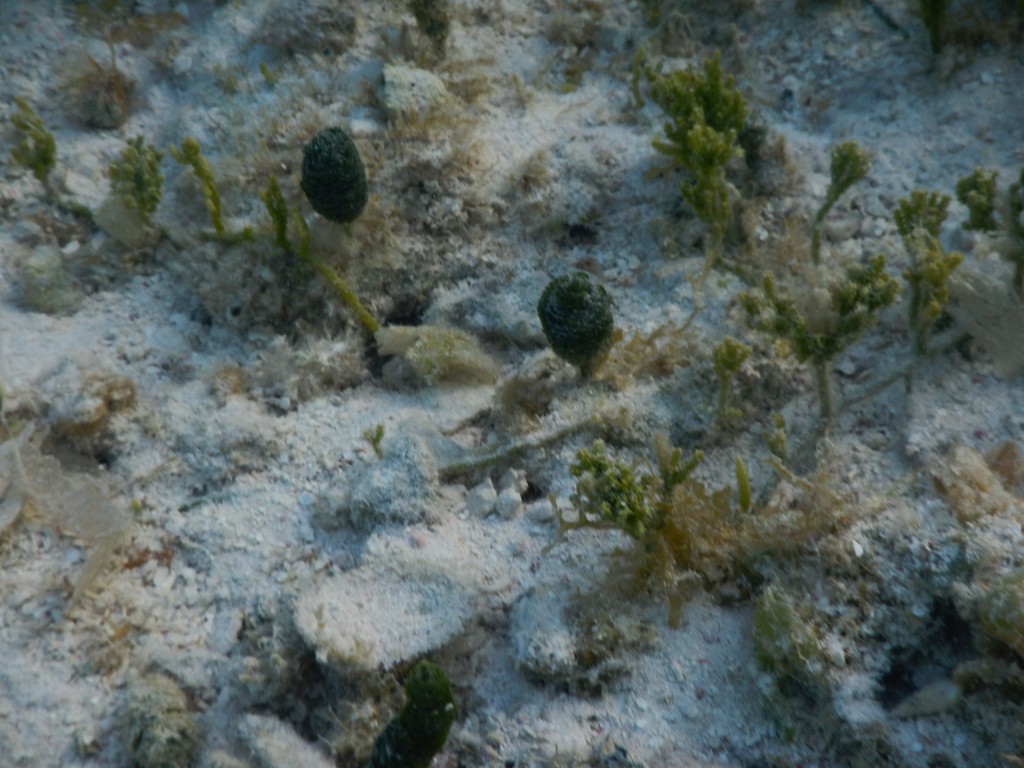Contrary to this blog’s title, today was an exciting day! We went out this morning to the fore reef, which is the area of open ocean that’s right outside of the atoll. There, since the waves are stronger and the water is deeper, the organisms are typically much bigger, as they need to be stronger to withstand the greater wave energy, and they have more room to grow upwards. We saw some really cool organisms from a distance because the bottom was maybe 70 feet below the surface and none of us (except the water safety officers) could hold our breath long enough to get to the bottom. Some of the cool organisms we saw included comb jellies, which were floating near the surface, and if you looked really closely, you could see that their combs were lit up with electricity. We also saw a school of medium blue fish that we weren’t able to identify, a sea turtle, most likely a green sea turtle, that was just sitting on the bottom, and a huge barrel sponge. Unfortunately, I did not see any brown algae, as it is too small to see from 70 feet above the reef. surprisingly, I saw minimal sargassum, which I think was due to the fact that the waves were so choppy.
a comb jelly! (picture courtesy of Phoenix)
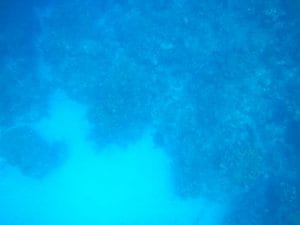
Unfortunately, the weather wasn’t really cooperating with us, so we had to head out pretty quickly. Lucky for us, that meant we could get the nightly presentations done in the morning in anticipation of a possible night snorkel.
The afternoon was a whole other ball game. Last night, we heard from the Belize Fisheries Department manager, and he spoke a bit about starting beach cleaning efforts on Middle Caye. Today, we did a beach clean up, but being TFBs, we had to incorporate science somehow! You can read about our research below 🙂
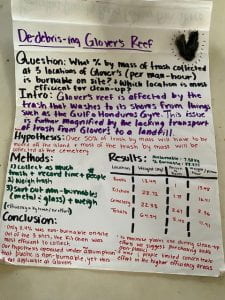
I was doing clean up in the mangrove area behind the kitchen, and there was a lot of trash! It was sort of sad because even though we had two giant trash bags overflowing with trash, we had hardly made a dent. We spent the whole afternoon doing the beach clean up, sorting the trash, and weighing it, before putting the trash back into the bags so they could be properly disposed of. The people at the Coral Graveyard also found a box fish skeleton!
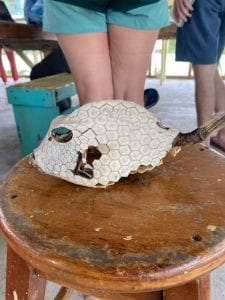
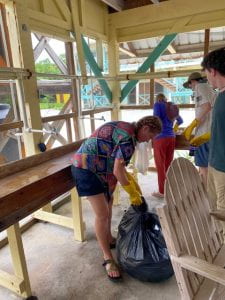
After the trash shindig we finished the last presentation, and then, courtesy of Nate, we got to watch a hermit crab change shells! I had seen videos of it yesterday in Lilliana’s crustacean presentation, but it was cool to see in real life. We then went to dinner, and since the weather wasn’t looking good enough for a night snorkel, we hung out and talked to Ruth, the water safety officer, about her experiences as a native Belizean, as well as the natural history of the country.
While most Mondays may be trash, today was certainly a good day! Tomorrow is the last full day on the reef, and we have a lot to do, so I will keep you all posted!

